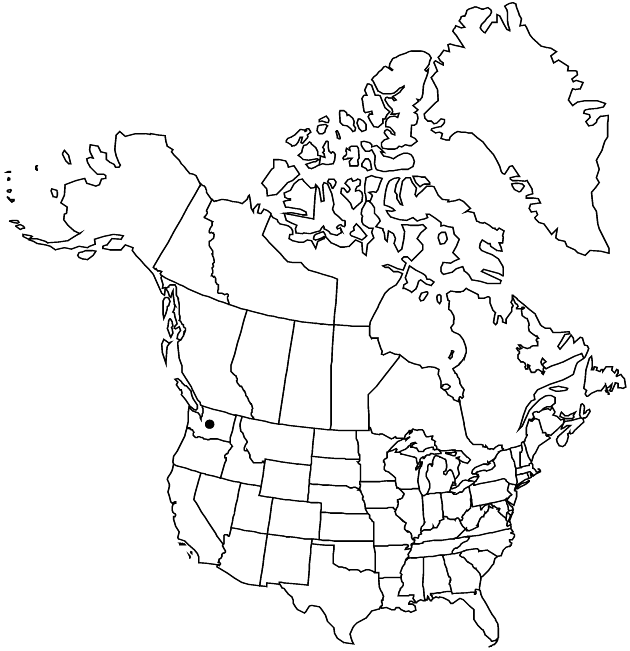Erigeron flettii
Bot. Surv. Olympic Penins., 244. 1936.
Perennials 5–15 cm; rhizomatous, fibrous-rooted, caudex or rhizome branches relatively short and thick. Stems basally ascending, sparsely villous to pilose, minutely glandular. Leaves mostly basal (persistent; petioles equaling or longer than blades); blades spatulate to oblanceolate-spatulate, 10–50 × 4–12 mm, cauline abruptly reduced distally, margins entire (apices rounded), faces sparsely hirsute or glabrous, eglandular. Heads 1. Involucres 6–8 × 10–15 mm. Phyllaries in 2–3(–4) series (purplish throughout or at margins and tips), hirsute to hirsuto-villous (hair cross walls clear or reddish to reddish purple), minutely glandular. Ray florets 25–40; corollas white, 7–10 mm (mostly 1–2 mm wide), laminae coiling tardily. Disc corollas 3.5–4.5 mm. Cypselae 2–2.8 mm, 2-nerved, faces strigose; pappi: outer of setae, inner of 15–20 bristles.
Phenology: Flowering Jul–Aug.
Habitat: Ledges, crevices, ridges, rocky slopes, meadows, alpine or near timberline
Elevation: (1500–)1800–3200 m
Discussion
Erigeron flettii differs from E. grandiflorus in having fewer, wider, consistently white rays, broadly spatulate basal leaves with bases constricted into narrow petioles longer than the blades and apices rounded or obtuse, less dense involucral vestiture, and strongly barbellate pappus bristles. It is known only from the Olympic Mountains.
Selected References
None.
